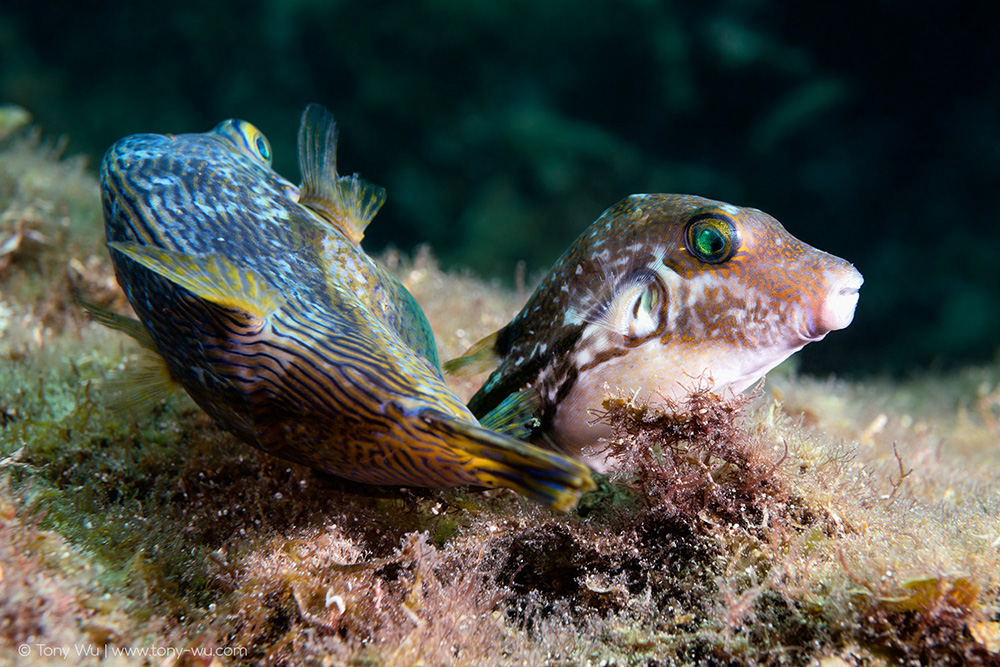Behold an intimate moment between lovestruck brown-lined puffers, aka Canthigaster rivulata, called kita-makura (キタマクラ) in Japan.

The fish facing the camera is the female. She is depositing eggs on a patch of reef that she has meticulously cleaned and prepared for the purpose. Facing away is the male.
The courtship process is similar to the lead-up to spawning of crowned puffers (Canthigaster coronata) that I wrote about before.
The female searches for the perfect spot, often picking, preparing and abandoning multiple locations over many hours. The male follows, grabbing a quick snack here and there, content to let the female do the legwork (finwork?).
When the time finally draws near, the male becomes agitated—nosing and nudging, generally being a pain in the pelvic fin—until the female says "OK, it's time." The male does his thing and skadoodles pronto. The female lingers for some time, cleaning and fussing, making sure everything is just right before leaving the scene.
I was fortunate to witness this event some years ago. During reproductive season, males patrol a large area—many hundreds of square meters—in search of receptive females. Females roam as well.
This means that the chance of spotting a pair ready to spawn isn't great. Following a patrolling male around is often a losing strategy, because scuba tanks only last so long. The more one swims, the quicker one's air supply depletes...the price we pay for having evolved lungs.
A friend told me about the love life of this species during lunch one day. In true geek style, my reaction was something along the lines of, "Way cool. It would be so awesome to see them spawn!" Then he told me reproductive season was already over. Major high to massive bummer in five seconds flat.
Later in the afternoon, I went into the water, hopes crushed like flotsam against the rocks.
But the first thing I saw was this pair, the female hard at work, the male still lounging about at that stage. 15 minutes or so thereafter the fish lined up, with the female giving me a wink as they came together to create the next generation of pretty puffers.